Exploring Aboriginal culture in Sydney
Discover over 60,000 years of culture, plant uses and stories from Aboriginal people in Sydney in this special episode of our Branch Out podcast.
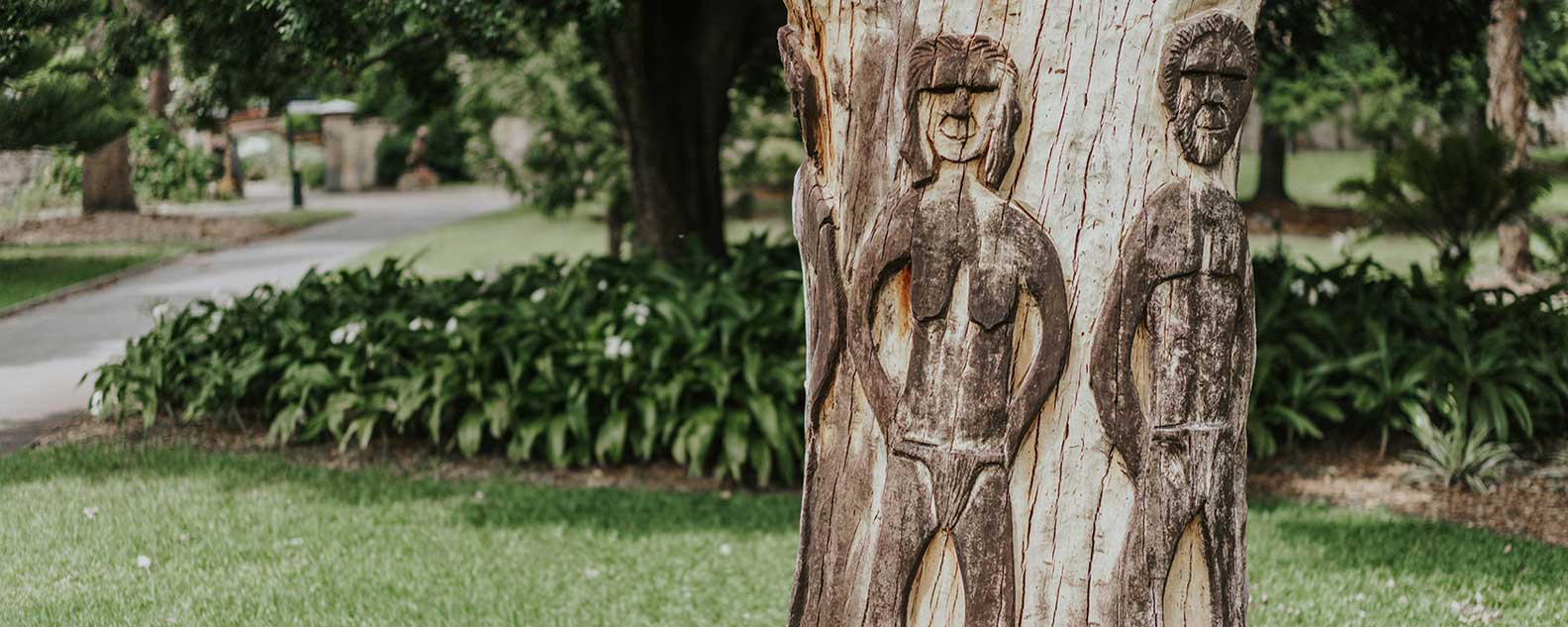
Hit play and discover Sydney's rich Aboriginal heritage
This special episode of Branch Out includes a sneak peek of the popular Aboriginal Heritage Tour at the Royal Botanic Garden Sydney where you'll discover the diverse history, traditions and plant uses from Cadigal country.
You'll also hear from a proud Dharawal elder John Foster and his passionate daughter Shannon who share some of their personal struggles and how they are keeping their culture alive through storytelling, advocacy, art and research.
Cadigal giving and taking from the sea
Aboriginal people have lived in Australia for over 60,000 years and there were once over 500 different clan groups. A mistake that most people make about Aboriginal people is that their language, culture, traditions and beliefs are all the same. Alone in the area now known as Sydney there are about 29 different clan groups, referred collectively as the Eora Nation. In the area the Royal Botanic Garden Sydney is located the traditional owners are the Cadigal people and they have a unique affinity with Sydney’s harbour and lands. On a recent Aboriginal Heritage Tour at the Royal Botanic Garden Sydney, Aboriginal Education Officer Kalkani Choolburra shared a curious and practical tradition from Cadigal culture. “Cadigal women used to tie material around a baby girl’s pinky finger just below the second joint. Once the pinky finger fell off, it was placed in the ocean,” said Kalkani. The removal of the finger is a practice known as ‘malgun’ and Kalkani says it was performed for a couple of reasons. “Cadigal women were hand and line fishers and without the pinky finger it made it easier for them to cast their line and carry out their fishing duties. Because the pinky finger is so much shorter than the other fingers the line always had a tendency of getting caught on it,” said Kalkani. “The tradition of putting the finger into the ocean is also to symbolise and promote a sense of sustainability and appreciation of being able to give something back to the sea for taking something from it (fish),” said Kalkani.
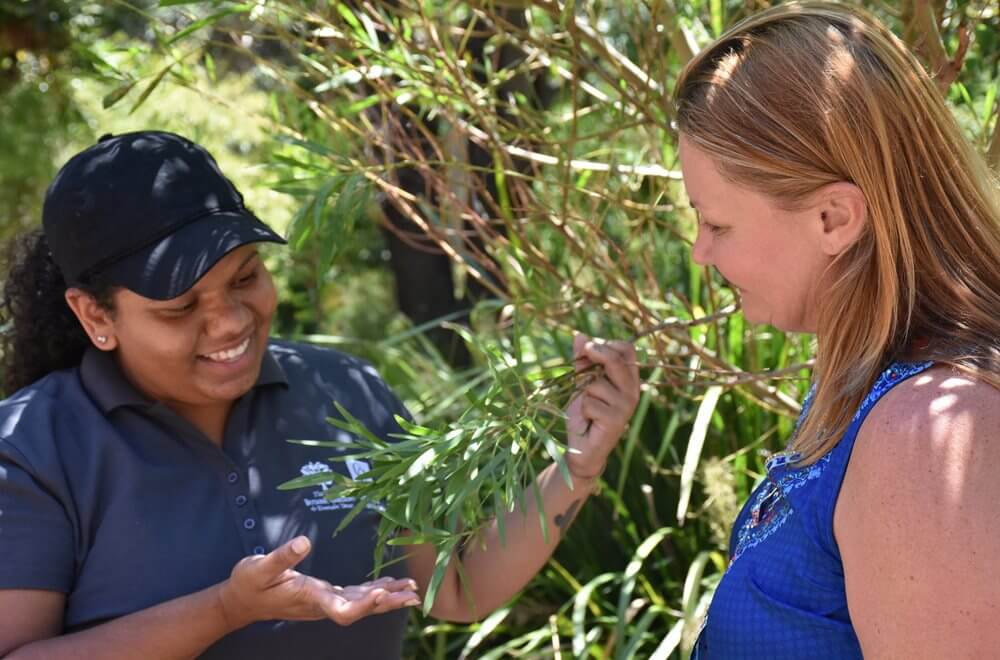
Photo: Kalkani Choolburra (left) leading an Aboriginal Heritage Tour at the Royal Botanic Garden Sydney.
The ultimate bush survival plant
If you live in Sydney, you've almost certainly seen a plant called Lomandra. It has long and flat green leaves and heavily scented flowers from late winter to early Spring. It’s a very hardy plant that is often found growing on median strips because it’s so drought tolerant. There are 51 species of Lomandra and they are all native to Australia. Kalkani says Lomandra is known as the ‘corner shop’ in some Aboriginal people’s cultures because it’s such a vital source of food and survival. “If you pull the long green blades out of the ground you can chew on the end of them for some hydration and nourishment - they taste like raw cabbage or fresh baby peas,” said Kalkani. “Aboriginal people also gathered the smooth strap-shaped leaves from the water’s edge to make useful things like baskets,” said Kalkani.
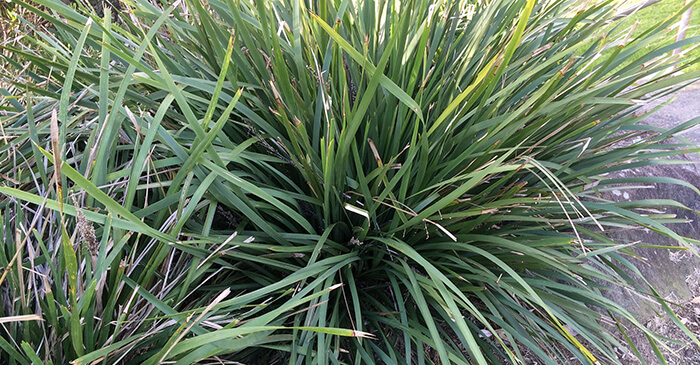
The iconic bush survival plant - Lomandra.
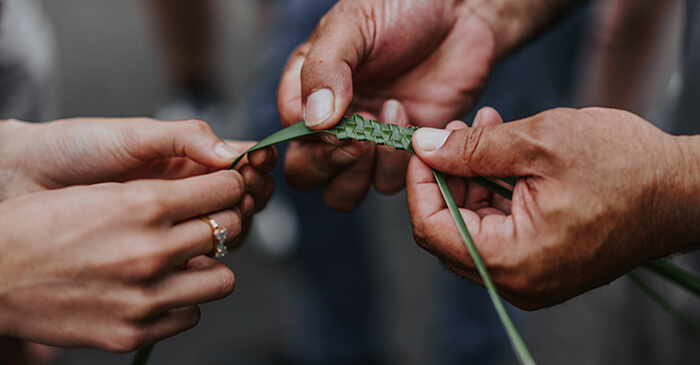
An Aboriginal Education Officer showing how to weave the Lomandra plant.
Keeping the Dharawal spirit alive
Another Aboriginal clan group in the Sydney area are the Dharawal people. John Foster is a Dharawal elder born in the 40's to an Aboriginal father and a white mother on a mission in La Perouse (a suburb in south-eastern Sydney).
Missions were areas of land set aside by the church and the state to relocate Aboriginal people and evangelise them.
"But my family and my community never let me forget my Aboriginal background and I've always been a real proud Dharawal Aboriginal man," said John.
John and his siblings were the only Aboriginal children at school and he says that discrimination can affect a child from a very young age.
"Discrimination was my education - it's made me who I am today," said John.
John said he had to do a lot of fighting at school to stand up against discrimination and his brother encouraged him to join the Police Citizens Youth Club (PCYC) to channel his energy into boxing. Turns out John was quite the athlete and even went on to play other sports like hockey.
John is incredibly resilient and he focused all of his efforts in his early life on working hard and he was eventually able to buy his own home with his wife.
"My education didn't start until I was in my 40's when I got an art certificate, which represented a trade certificate and it led to me getting my job with CRS Australia," said John.
John also became an ambassador for Aborginal people with disabilities and one of the last things he did when he retired was address the United Nations.
For over 80 years John has kept his Aboriginal culture and identify alive and his daughter Shannon is living proof of that success.
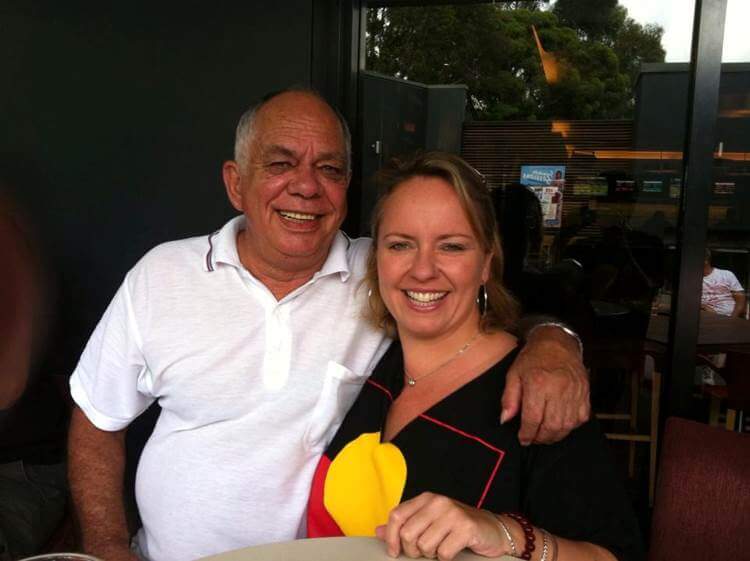
Dharawal elder John Foster and his daughter Shannon Foster
Uncovering and celebrating Dharawal history
Shannon Foster is currently completing a PhD at the University of Technology in Sydney at the Centre for the Advancement in Indigenous Knowledges. Part of her research involves documenting her family's history and stories.
"For so many generations there's been no opportunity to tell our stories and the relief and carthardic process to see my elders finally tell their stories is really powerful," said Shannon.
Shannon and her family all live next door to her father John where they are also proudly keeping their culture alive in the home.
"It's a really surreal moment when we sit in our background and my dad is playing the didgeridoo, the kids are playing the clap sticks and my sister is singing. It's amazing, we're smack bang in the middle of Sydney and we're having our own corroboree," said Shannon.
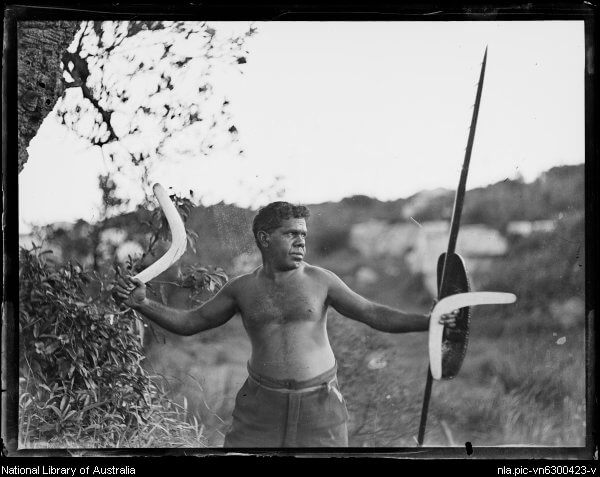
Photo: Fred Foster, Shannon Foster's great grandfather and John Foster's father on the Day of Mourning protest.
Showcasing Sydney Aboriginal culture through art
On top completing her PhD Shannon is also a talented artist and is committed to showcasing the 'Sydney style' of Aboriginal art. "The Sydney style is all about leaving our mark on a place. In the caves and shell middens around Sydney you'll find hand stencils everywhere," said Shannon. "I also incorporate country into my artwork. I'll go down to the harbour and collect water, sand, grass and mud. I'm just there as a tool - as a way for that country to get on the canvas," said Shannon. Shannon was also selected by the City of Sydney to create artwork for the NAIDOC week and her creation titled 'Naba Gumal' meaning 'Friends and Family' was beautifully displayed on banners around the city.
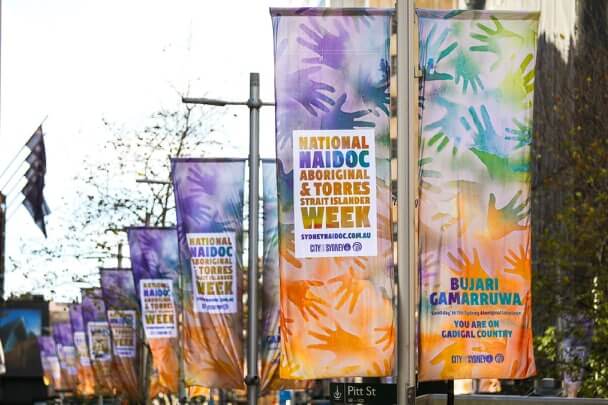
Photo: Shannon Foster's artwork 'Naba Gumal' meaning 'Friends and Family' was used for the City of Sydney's NAIDOC week banners around the city.
See or hear Aboriginal culture in Sydney for yourself
This is just a taste of what you can discover about Aboriginal culture in Sydney. If you want to head along on one of the Aboriginal Heritage Tours running at the Royal Botanic Garden Sydney visit our web page to see tour times.
If you can’t get to one of the Aboriginal Heritage Tours in Sydney hit play below and go on an audio adventure in the special episode of our Branch Out podcast featuring Kalkani Choolburra, John Foster and Shannon Foster. Subscribe to Branch Out on your Apple or Android device for more episodes.
If you are a journalist and have a media enquiry about this story, please click here for contact details and more information.
Related stories

Bunga Bangkai (Indonesian), Titan Arum or Amorphophallus titanum has the biggest, smelliest flower-spike in the world. It flowers for just 24 hours, once every few years… and in January 2025 one bloomed at the Royal Botanic Garden Sydney. Named Putricia by staff at the Botanic Gardens of Sydney, she quickly captivated people from all over the world, writes John Siemon, Director of Horticulture and Living Collections.
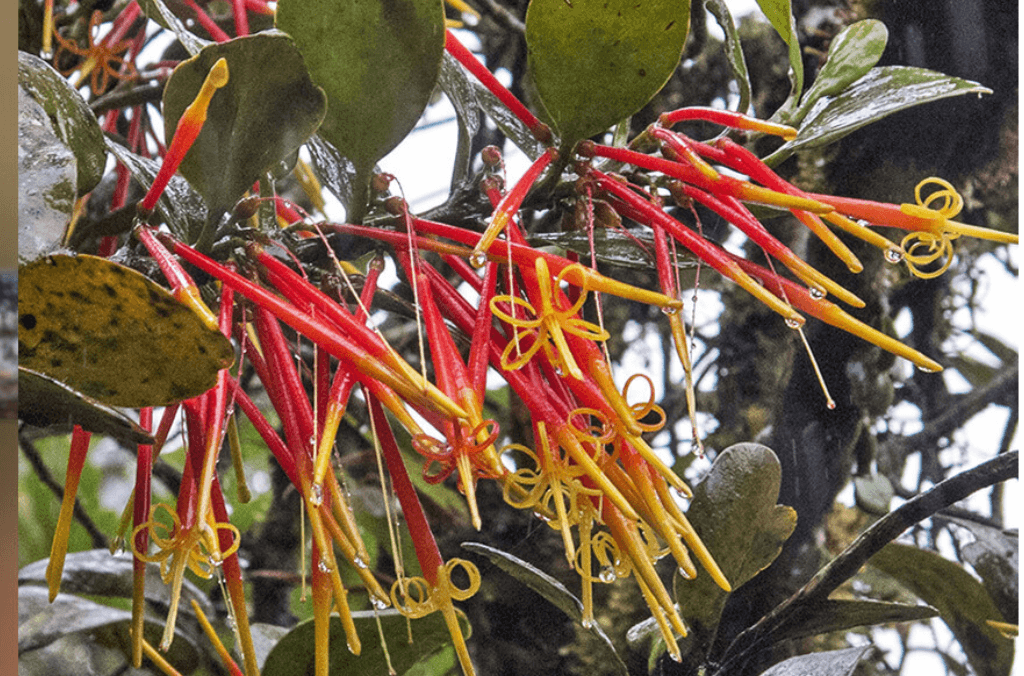
Mistletoe is in love potions, ancient medicines to ward off epilepsy and ulcers, and even a Justin Bieber Christmas song.

Mistletoe is in love potions, ancient medicines to ward off epilepsy and ulcers, and even a Justin Bieber Christmas song.